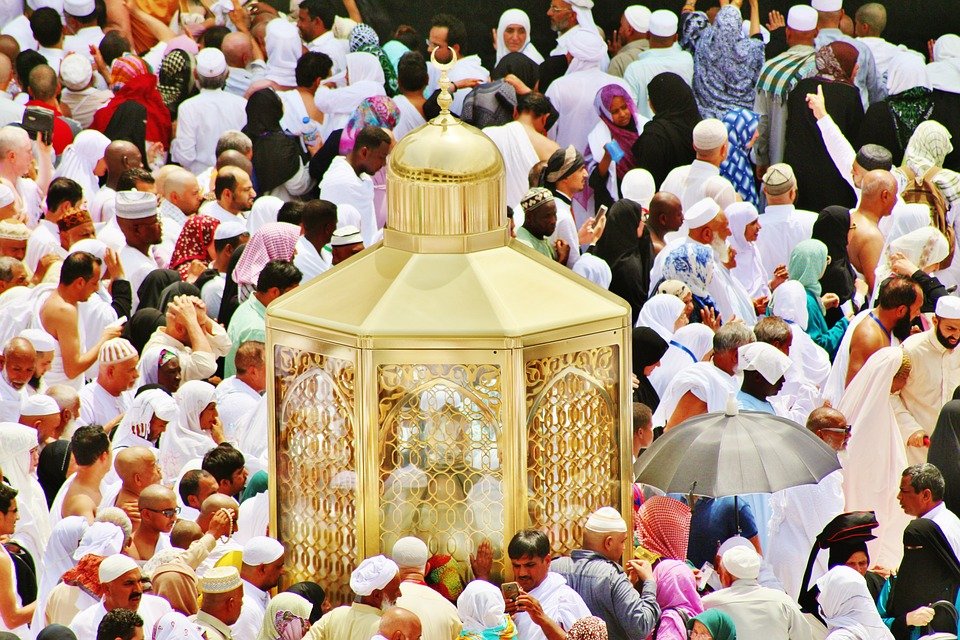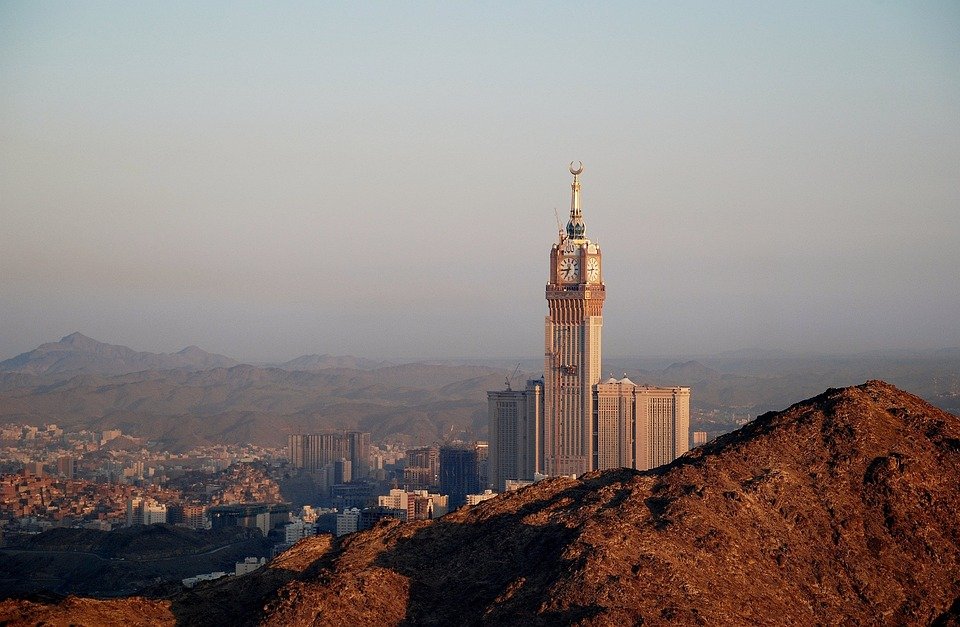You are here to read: Why Does Kaaba Take Place in Hajj: Significance Explained – A Thoughtfully Written Guide Offering Spiritual Wisdom and Travel Advice for Every Pilgrim who is going on holy journey of Hajj or Umrah.
Understanding why the Kaaba takes center stage during Hajj is essential for every Muslim. The Kaaba, a sacred structure in Mecca, holds immense significance and serves as the focal point of the Hajj pilgrimage. In this article, we will explore why the Kaaba is integral to Hajj, shedding light on its historical context and spiritual meaning. I promise you’ll find a comprehensive guide on this topic, helping you appreciate the deep-rooted traditions associated with the Kaaba and its critical role in the rituals of Hajj.
In my opinion, the importance of the Kaaba during Hajj cannot be overstated. It represents the oneness of God and serves as a symbol of unity among Muslims around the world. Every year, millions of pilgrims turn towards the Kaaba as they perform their rituals, reinforcing their faith and commitment. With our nine years of experience in Umrah and Makkah, Madinah travel since 2016, we are well-equipped to provide insightful information on “Why Does Kaaba Take Place in Hajj: Significance Explained.” Together, we will delve into the spiritual and communal aspects that make the Kaaba a cornerstone of this profound religious experience.
What is the Kaaba?
The Kaaba, located in the heart of the Masjid al-Haram in Makkah, is a cube-shaped structure that plays a vital role in the Islamic faith. It stands at about 13 meters high, and its walls are made of black granite. Every Muslim recognizes this sacred site, as it is the direction, or Qibla, towards which all prayers are directed. In my opinion, its simplicity is what makes it so compelling. Covered in a beautiful silk cloth known as the Kiswah, the Kaaba is adorned with intricate calligraphy that contributes to its majestic appearance.
During Hajj, millions of people congregate around the Kaaba, which makes it a central point of spiritual unity among Muslims. This gathering embodies the essence of equality and brotherhood in Islam. By facing the Kaaba during prayers, followers feel a sense of belonging to a larger community, which can be incredibly fulfilling. I think this significance is what draws people to participate in Hajj, making it one of the most important acts of worship in Islam.
The Importance of Hajj
Hajj is one of the Five Pillars of Islam, which means it holds immense importance for Muslims around the world. Every Muslim who is physically and financially capable is required to perform Hajj at least once in their lifetime. This pilgrimage takes place during the Islamic month of Dhu al-Hijjah and lasts for several days, filled with rituals that remind us of the essence of faith, sacrifice, and community.
By participating in Hajj, believers reaffirm their devotion to Allah, and it serves as a stark reminder of humility. We stand side by side with people from different backgrounds, cultures, and nationalities. This experience promotes a sense of unity, making each participant feel connected to the global Muslim community. I feel that the spiritual transformation many experience during this time carries long-lasting effects, encouraging them to continue living a life of faith and gratitude.
Why the Kaaba is Central to Hajj
The Kaaba serves as the focal point for the Hajj pilgrimage, symbolizing the unity of Muslims. This divine structure encapsulates the essence of submission to Allah, as pilgrims circle it in a ritual called Tawaf. This act is not just a form of worship; it signifies our devotion and loyalty to God. The circular movement around the Kaaba mirrors the harmony and rhythm of the universe.
You're at the middle of this awesome post at AirlinkHajjandUmrah.com through: Why Does Kaaba Take Place in Hajj: Significance Explained. Keep reading, it gets better!
When I think about why the Kaaba is so central to Hajj, I am reminded of its historical significance. According to Islamic tradition, the Kaaba was built by the Prophet Ibrahim (Abraham) and his son Ismail (Ishmael) as a place for worship. Over centuries, it has withstood the tests of time and calamities, standing as a testament to faith. Its central role during Hajj reinforces the bond between Muslims and their historical roots.
The Spiritual Atmosphere at the Kaaba
When you stand before the Kaaba, the atmosphere feels electric. You can sense the energy of millions of hearts beating in unison, all focused on worship. The air is thick with devotion, prayers, and hope. In my opinion, this unique environment elevates the spiritual experience of each pilgrim. Every corner of the Masjid al-Haram reverberates with history and significance, which encourages deep reflection and personal growth.
Pilgrims often report feeling overwhelmed with emotion when they first catch sight of the Kaaba. Tears well up, and feelings of joy and sorrow intertwine. This emotional release allows people to connect with their faith on a profound level. I think this emotional journey makes the experience of Hajj not just a physical one, but a deep, spiritual obligation that can transform lives.
The Rituals around the Kaaba
During Hajj, several rituals surrounding the Kaaba illustrate the core values of Islam. One of the most important is Tawaf, where pilgrims walk around the Kaaba seven times, counterclockwise. Each phase of Tawaf becomes a meditative practice, where individuals think of their intentions and seek forgiveness. It’s a reminder of our earthly existence and our eternal journey towards God.
After the Tawaf, many pilgrims perform the Sa’i, which involves walking between the hills of Safa and Marwah. This act commemorates the search for water by Hagar, the wife of Ibrahim. Through this ritual, we remember the struggles of our ancestors and the importance of perseverance. We celebrate our faith while reflecting on our origins. In my view, these rituals create not just a physical connection to the Kaaba but also an emotional link to our history and values.
Unity and Equality at the Kaaba
One of the most beautiful aspects of the Kaaba is its ability to foster unity and equality. When I see people from diverse backgrounds gathering in one place, it fills me with hope. The rich tapestry of cultures, languages, and traditions all converge around the Kaaba, reinforcing the idea that we are all equal in the eyes of Allah.
During Hajj, individuals wear simple white garments, known as Ihram, to eliminate distinctions based on wealth, status, or appearance. This simple clothing symbolizes purity and humility. I believe that standing shoulder to shoulder with fellow Muslims, regardless of where they come from, serves as a powerful reminder that faith binds us together, transcending all barriers.
The Lasting Impact of the Kaaba
The Kaaba is not merely a physical structure; it leaves a lasting impact on those who visit. After participating in Hajj, many pilgrims return home with a revitalized spirit and a sense of purpose. They often talk about how the experience changed their views on life, faith, and community. I think this transformation is one of the greatest gifts of this pilgrimage.
The significance of the Kaaba continues long after Hajj ends. Many people carry the memories and lessons learned during their time there as they navigate their daily lives. Whether it’s being kinder to others, strengthening their faith, or participating more actively in their communities, the influence of the Kaaba can resonate for years. In essence, it inspires growth and a deeper understanding of our collective responsibilities as part of a global Muslim community.
That wraps up Why Does Kaaba Take Place in Hajj: Significance Explained. Thanks for sticking with us till here! Share this: Why Does Kaaba Take Place in Hajj: Significance Explained with your friends.
Check our homepage at Air Link Hajj & Umrah for more awesome updates.
Some interesting posts are: 1: Umrah Mubarak, 2: When is Umrah closed 2026?, 3: When does Umrah start after Hajj 2026?
Mushu, an experienced Saudi Arabia traveler and writer, shares insightful tips and spiritual reflections to enhance Hajj and Umrah journeys for fellow pilgrims. He has been to Makkah and Madina from 2016 to 2023 many times and his posts will reflect this.







